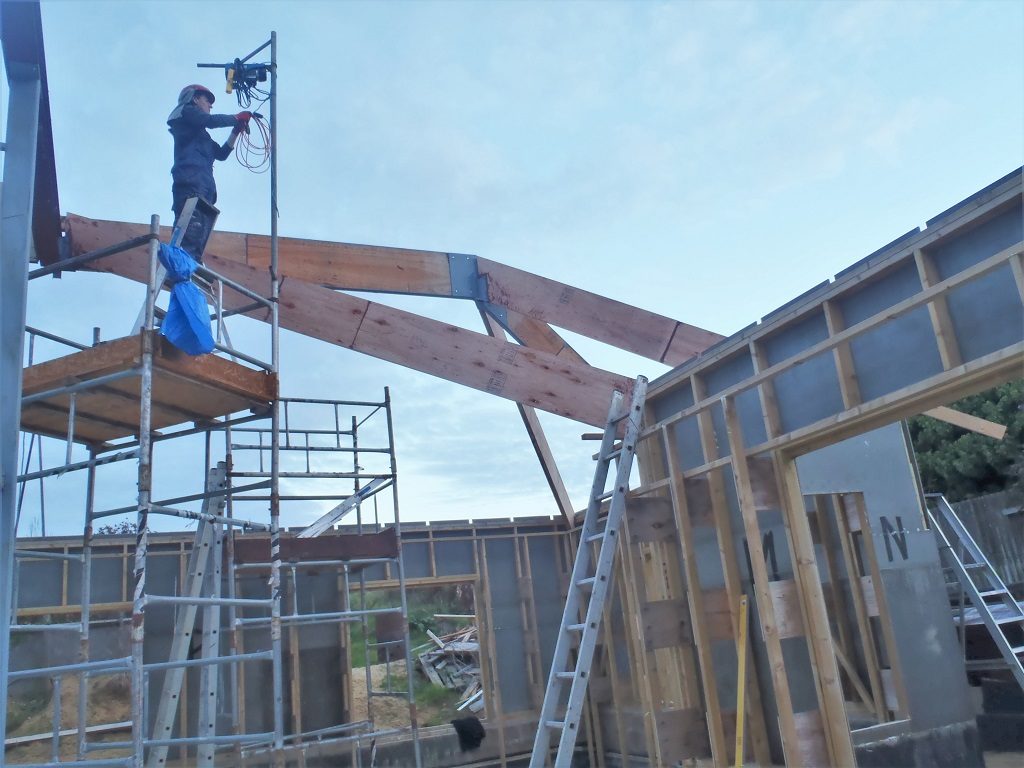Today was the day when we grabbed the three rafters that we created yesterday and the day before, and took them outside to get them up and installed!
We only needed to do some little extra work on them in the workshop like putting the bevel slope on the longer MN rafter and round off the edges where all three fitted into the metal brackets.
But first, we went out to slice and remove the cement board and bit of wood off the top-plate for the outside corners (the NO and OP corners) where the eves are sticking out, and the inside corner (the MN corner) needed the pointy bit sliced off the top-plate too.
So after that preparation tasks were done, we got the first rafter, the OP rafter, out and it went up and slid into place more or less straight away. We then glued and screwed tight the corner post against the cement boards and then We got the rafter itself all glued and nailed just before lunch.
After lunch, the second rafter, the NO rafter, also went up and installed with little fuss too! WOW! This is good!
Then we started on the third (the very last LVL special rafter – this was the MN rafter) and lifted it into position and slid it down into the metal bracket .. and it got stuck half way in! The rafter was too long. We had already glued and screwed the corner post into place as well and aligned it all up correctly, but the rafter seems to be too long. So we brought the rafter back down to the ground level and roll out our power planer to take a thin slice off the bevelled end and tried fitting it again. it didn’t get all the way, still 50mm short! So again, rafter came down and more slicing was done. Up it went again and .. nope! It didn’t fit, gap down to 35mm now. this was repeated two more times and we got the gap down to 15mm so we filled the gap with a lump of wood and settled for that solution. All was glued and nailed into place.
That concludes all the LVL special rafters .. 12 corners (5 valley types and 7 hips) and 3 ridge rafters (1 straight and 2 bent with 45 degree elbow joint). It took a long time to do all these (2 months!), but they are a major structural element of the roof and they have to be well prepared and carefully created so we couldn’t cut corners!! The next job is to start making the regular rafters (the 400mm wide ones) and they don’t need to be so fussy about cleaning joints and don’t use special LVL timber, also they come in regular shapes and sizes so we should be able to get a mass production scheme of working and get many more created and installed quickly.

